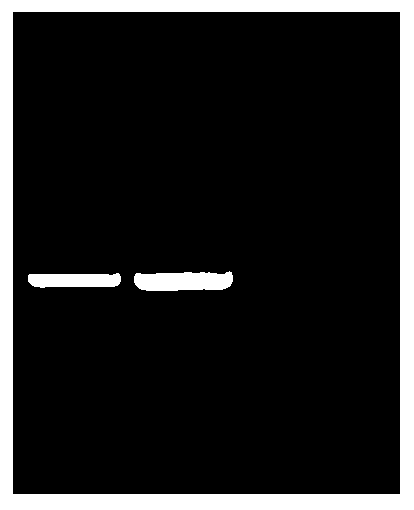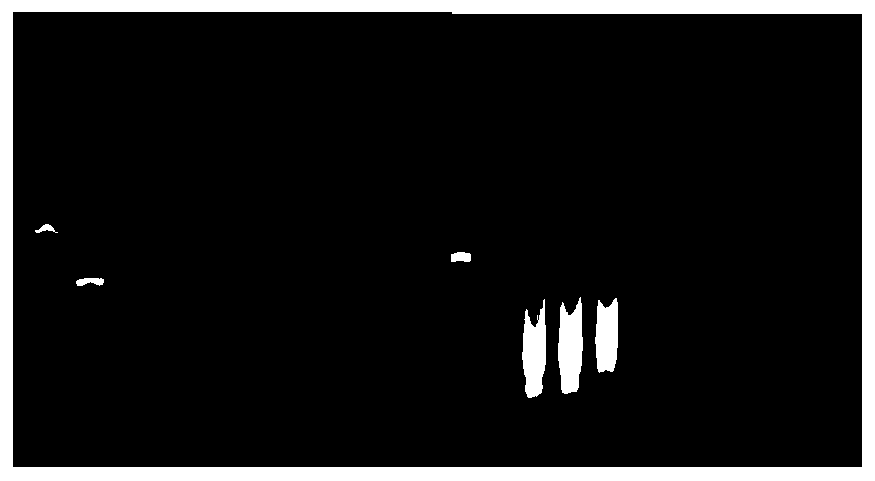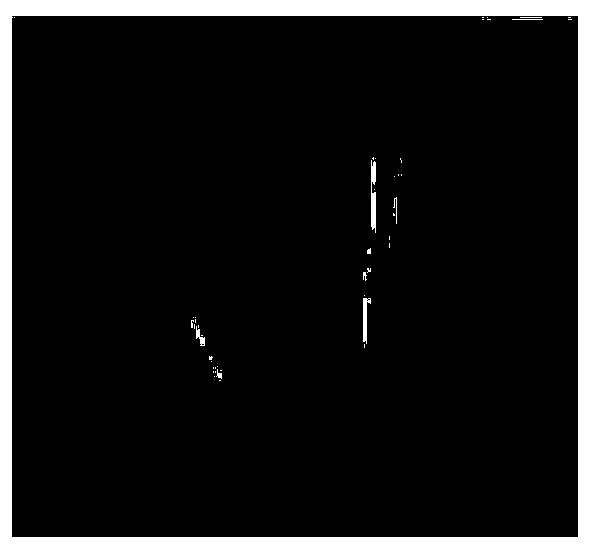LAMP synchronous detection method for staphylococcus aureus and salmonella in liquid milk and kit
A technology for Staphylococcus and Salmonella, applied in biochemical equipment and methods, microbial measurement/inspection, recombinant DNA technology, etc., can solve the problems that the freshest products cannot be put on the market and delivered to consumers, so as to prevent proliferation and Contamination, high sensitivity, and easy operation
- Summary
- Abstract
- Description
- Claims
- Application Information
AI Technical Summary
Problems solved by technology
Method used
Image
Examples
Embodiment 1
[0036] Embodiment 1 liquid milk sample collection
[0037] Use cleaned sampling tools and sample bottles, and the sample bottles must be free from residual disinfectants, water and detergents. Sampling was carried out in the milking hall of the milk station, milk storage tanks in the milk station, milk tanks in milk trucks, liquid milk production lines and supermarkets, and detailed records were made. Fresh samples collected were tested immediately.
Embodiment 2
[0039] A method for loop-mediated isothermal amplification technology detection of Staphylococcus aureus and Salmonella in liquid milk, comprising the following steps:
[0040] S1. Genome extraction
[0041] (1) Sample preparation: Take 1ml of liquid milk and put it into a 1.5ml centrifuge tube, centrifuge at 12000rpm for 5min, discard the supernatant; add 1ml of normal saline, blow and mix, centrifuge at 12000rpm for 1min, discard the supernatant, add 1ml of normal saline to the precipitate Mix by pipetting.
[0042] (2) Bacterial lysis: add lysozyme to the precipitate obtained in step (1), 37 ° C for 10 min, then add lysate and mix, 37 ° C for 5 min, lyse, then add proteinase K, 70 ° C for 10 min, Obtain the lysate.
[0043] (3) DNA extraction: use phenol chloroform to extract the lysate obtained in step (2) to obtain a white suspension, carefully collect the supernatant, add isopropanol and sodium acetate, mix well, and collect the precipitate after centrifugation. Wash ...
Embodiment 3
[0067] A kind of loop-mediated isothermal amplification technique detects the method for Staphylococcus aureus and Salmonella in liquid milk, and its difference with embodiment 2 is:
[0068] S3. LAMP detection
[0069] The isothermal amplification temperature is 60°C constant temperature water bath for 1 hour, and then 80°C to inactivate the polymerase used. In a 20 μL reaction system, the concentrations of outer primer F3, outer primer B3, inner primer FIP, inner primer BIP, loop primer LF, and loop primer LB were all 10 μM, and the amounts added were 0.5 μL, 0.5 μL, 2 μL, 2 μL, 1 μL, 1 μL, the molar ratio in the reaction system is 1:1:4:4:2:2; the amount of 0.16U / μL Bst DNA polymerase added is 0.4 μL.
[0070] Visual analysis of S4.LAMP detection results
[0071] In this experiment, hydroxynaphthol blue (HNB) was used as the chromogenic agent of the LAMP visualization method, and the reaction was judged according to the change of hydroxynaphthol blue (100 μmol / L) before a...
PUM
 Login to View More
Login to View More Abstract
Description
Claims
Application Information
 Login to View More
Login to View More - R&D
- Intellectual Property
- Life Sciences
- Materials
- Tech Scout
- Unparalleled Data Quality
- Higher Quality Content
- 60% Fewer Hallucinations
Browse by: Latest US Patents, China's latest patents, Technical Efficacy Thesaurus, Application Domain, Technology Topic, Popular Technical Reports.
© 2025 PatSnap. All rights reserved.Legal|Privacy policy|Modern Slavery Act Transparency Statement|Sitemap|About US| Contact US: help@patsnap.com



